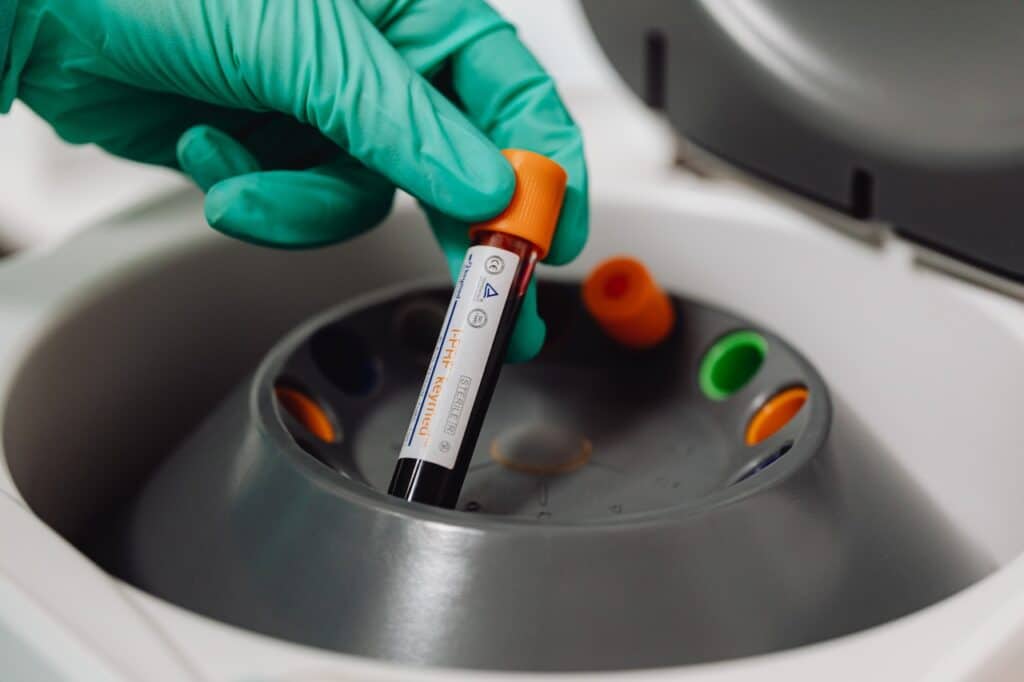If you need a virtual biobank software application to manage biological samples, please contact us at info@zlynger.com
A virtual biobank is essentially an online platform (software application) to track and access detailed data of pre-collected biological samples physically stored in one or various biobanks. They are integral to clinical research and patient care. Research takes place within a global context and scale. Virtual biobanking makes this level of research possible.
What Is a Biobank?
A biobank is a collection of biological specimens typically located in the context of a hospital or research institute. In addition to the samples themselves, the biobank includes detailed information about the specimen. In particular, samples of human biological material may include relevant characteristics —such as height, weight, race, and age— the health history of the person the sample came from, and any other characterizations that have been made.
What Is a Virtual Biobank?
A virtual biobank is a collection of pre-collected biological samples accessible through a virtual portal. It is essentially a database of samples stored in one or more physical biobanks and it makes a collection of samples from a biobank or several locations available for viewing and querying digitally. The virtual biobank usually consists of 2D and 3D micrographs of the specimen accompanied by detailed, de-identified clinicopathological and technical metadata.
In the virtual biobank, researchers can communicate with administrators at the physical biobanks where the samples are stored, and there is also the possibility to request the sending of a sample. With a virtual biobank, researchers can track, view information about, and request biological samples from various locations, all in one platform.
Why Are Biobanks Important?
Biobanks are important because they allow the storage of biological samples for patient care and clinical research. They provide infrastructure and expertise in collecting and preserving high-quality biological samples for research while always respecting the rights of donors.
Biobanks are a paramount resource for translational research. They give researchers access to large pools of biological samples representing large numbers of people, which is essential to the process of applying discoveries made at the lab bench to the practice of medicine. Biobanks are an excellent source for samples needed for high throughput analysis of biospecimens. Before the establishment of biobanks, it was unfeasible to collect enough samples to carry out such studies in areas such as genomics and personalized medicine. What is more, not only do biobanks speed up research, but they also make research possible, which used to be very difficult to achieve.
Furthermore, they have the ability to make specimens available for various research purposes. Specimens in biobanks and the data derived from them can be used by multiple researchers to verify data and carry out cross purpose research studies.
What Types of Biobanks Are There?
Biobanking has expanded exponentially in the last few decades, leading to a variety of types of biobanks. Universities and hospitals started the first biobanks decades ago and still maintain important biobanks. For example, the Boston Children’s Hospital in the United States operates the well-known Precision Link Biolab for Health Discovery.
Large, publicly sponsored biobanks have now been established in most developed countries. One of the largest biobanks in the world is the Biobank Graz of the Medical University of Graz in Austria. Its collection includes approximately 20 million human-derived samples catalogued in several different collections. Some developing countries have also built biobanks, which is a boon to medical research.
Today, biobanks can be operated as a commercial enterprise, a public service for research, or a public-private collaboration. They can collect and catalogue by population or by disease. Moreover, they can simply store samples and data or also track the sample donors over time. Many biobanks have emerged that are dedicated to the study of rare or specific conditions. Biobanks are as diverse and necessary as clinical research requires.
Why Are Biobanks Particularly Important in Clinical Research?
Biobanks are used to manage samples in clinical trials for translational analysis, biomarker studies, and other forms of research. In medicine, clinical studies must be done with a sufficiently large number of samples to reflect the diversity of the human population and meet the standards of optimum research, which are necessary for the development, and eventual approval, of a pharmaceutical or other therapy. Biobanks and biobank networks are the optimal infrastructure for sourcing and storing large volumes of human biological samples as they can, on the one hand, ensure the optimum quality and security of these specimens and, on the other hand, fulfill the ethical and legal requirements to guarantee the rights of participants.
What Types of Biological Samples Are Stored in a Biobank?
Any kind of biological material can be stored in a biobank. Bearing this in mind, some of the most common materials stored in biobanks include: tissue, blood, urine, cerebral spinal fluid, feces, tumors, genetic material, and bacteria, among others.
What Are the Advantages and Benefits of a Virtual Biobank?
Using a web-based database, virtual biobanks allow researchers to easily track, query, and view images and detailed information about biological samples stored in a broad base of repositories. A virtual biobank provides a central database for the specimens —blood samples, tumors, genetic material, etc., and their related data— that are part of a particular clinical trial or other study. Then, the collection can be accessed using specialized web portals.
Through the portal, researchers can also communicate directly with the administrators at the biobank, or biobanks, where the samples are stored. When a request is placed through the portal, it is routed to the appropriate entity and the sample is processed and sent to the researcher. A virtual biobank combines the best of both worlds. Researchers have centralized access to a broad set of samples from across different locations while allowing the individual biobanks to retain their standard controls and best practices for storing, processing and distributing samples.
What Does a Virtual Biobank Software Do?
Virtual biobank software applications permit researchers to handle data associated with the samples, communicate with various biobank administrators, and organize logistics such as the shipment of samples. Through virtual biobank software, the operations of tracking, querying, viewing, and moving biological samples with their research information can be handled from a single platform.
What Virtual Biobank Software Solution Does Zlynger Provide?
Zlynger provides a web-based virtual biobank application to have full control of the samples associated to a biobank. This software can be fully customized according to the needs of each customer, including personalized data forms and workflows. Zlynger’s biobank software can be used within a hospital context but also to track biological samples in clinical trials (e.g., tracking of blood and tumor tissue in cancer studies).
If you need a virtual biobank software application to manage biological samples, please contact us at info@zlynger.com



